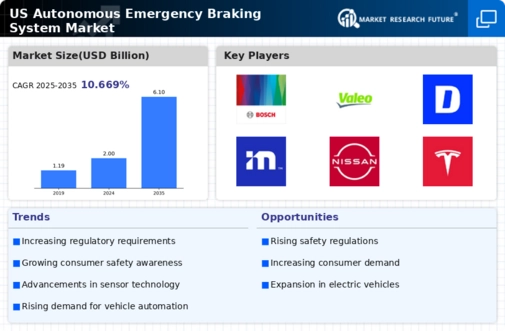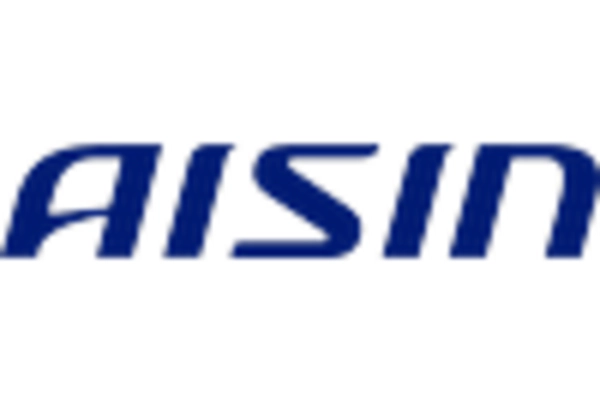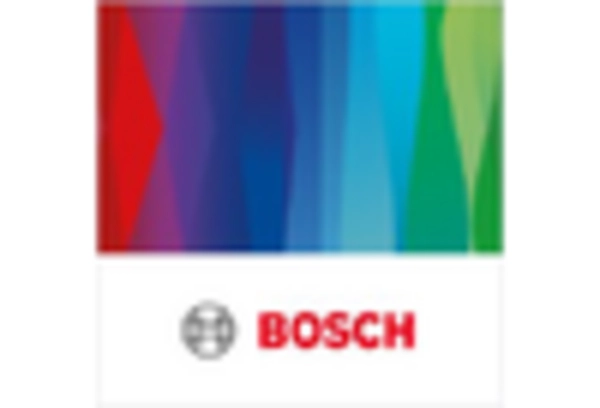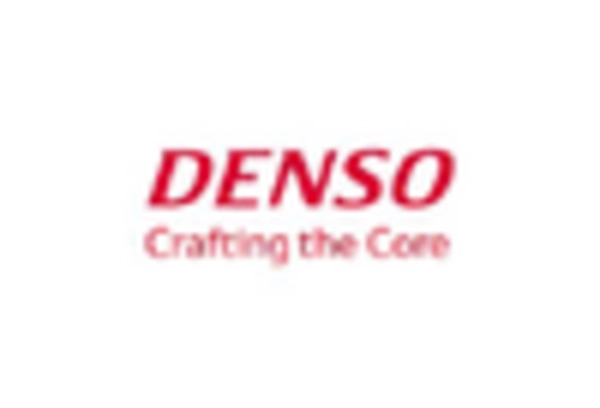Consumer Awareness and Education
Consumer awareness regarding vehicle safety features is a crucial driver for the autonomous emergency-braking-system market. As more information becomes available about the benefits of these systems, consumers are increasingly prioritizing safety when purchasing vehicles. Surveys indicate that approximately 70% of potential car buyers in the US consider advanced safety features essential. This growing awareness is likely to influence purchasing decisions, pushing manufacturers to equip their vehicles with autonomous emergency braking systems. The market is expected to expand as consumers demand vehicles that not only provide comfort but also enhance safety through innovative technologies. This trend indicates a shift in consumer preferences that could significantly impact market dynamics.
Increasing Road Safety Initiatives
The push for enhanced road safety in the US is a pivotal driver for the autonomous emergency braking system market. Government agencies and safety organizations are advocating for advanced safety technologies to reduce traffic accidents. In 2025, it is estimated that nearly 38,000 fatalities occur annually due to road accidents, prompting a demand for systems that can mitigate such risks. The autonomous emergency-braking-system market is positioned to benefit from these initiatives, as they align with the goal of achieving zero fatalities on the roads. Furthermore, the National Highway Traffic Safety Administration (NHTSA) has been actively promoting the adoption of these systems, indicating a potential increase in market penetration as more vehicles are equipped with this technology.
Technological Integration in Vehicles
The integration of advanced technologies in vehicles significantly drives the autonomous emergency braking system market. As automotive manufacturers increasingly incorporate artificial intelligence and machine learning into their designs, the capabilities of these braking systems are expected to improve. By 2025, it is projected that over 50% of new vehicles sold in the US will feature some form of automated driving technology, which includes autonomous emergency braking. This trend suggests that the market will likely experience substantial growth as consumers become more accustomed to these innovations. The seamless integration of these systems into existing vehicle architectures is crucial for enhancing their effectiveness and reliability, thereby driving further adoption.
Legislative Mandates for Safety Features
Legislative mandates aimed at improving vehicle safety are emerging as a key driver for the autonomous emergency-braking-system market. In recent years, various states have introduced regulations requiring the inclusion of advanced safety technologies in new vehicles. By 2025, it is anticipated that more states will adopt similar mandates, further propelling the market. These regulations are designed to reduce accidents and fatalities, aligning with national safety goals. The autonomous emergency-braking-system market stands to gain from these legislative efforts, as compliance with safety standards becomes a necessity for manufacturers. This regulatory environment is likely to foster innovation and investment in safety technologies, thereby enhancing market growth.
Partnerships and Collaborations in the Automotive Sector
Strategic partnerships and collaborations among automotive manufacturers, technology firms, and research institutions are driving the autonomous emergency-braking-system market. These alliances facilitate the sharing of knowledge and resources, leading to the development of more sophisticated braking systems. In 2025, it is expected that collaborations will increase as companies seek to enhance their technological capabilities and market reach. By pooling expertise, stakeholders can accelerate the innovation process, resulting in improved safety features and performance. This trend indicates a dynamic market landscape where cooperation among industry players is essential for advancing the capabilities of autonomous emergency braking systems, ultimately benefiting consumers and enhancing road safety.

















Leave a Comment